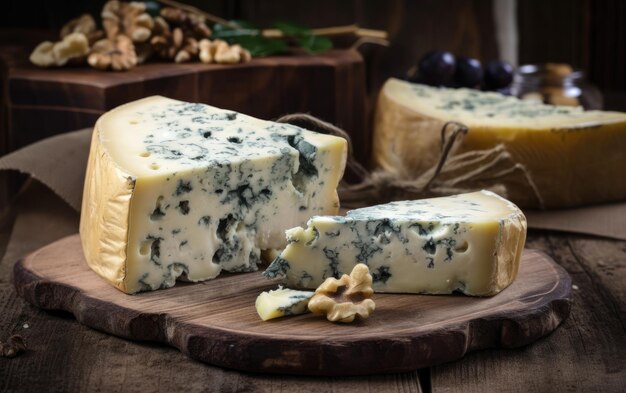Masgonzola: A Unique Cheese Blending Tradition and Innovation
Cheese lovers across the world are always on the lookout for something new yet rooted in tradition. Masgonzola is one such treasure — a distinct variety that combines the deep, time-honored methods of Italian cheese-making with an innovative twist. It’s a cheese that respects its heritage while daring to step beyond the boundaries of convention, offering a unique flavor experience for adventurous palates.
Whether you’re a culinary enthusiast, a professional chef, or simply someone who appreciates good food, understanding Masgonzola means discovering the fine art of blending history with creativity.
The Origins of Masgonzola
Masgonzola draws its inspiration from the rich legacy of Italian cheesemaking, where artistry and patience meet. Italy’s dairy tradition dates back thousands of years, producing iconic cheeses like Parmigiano Reggiano, Gorgonzola, and Mozzarella.
Masgonzola takes cues from these classics but adapts them with modern techniques and unique ingredient combinations.
Some cheese historians suggest that Masgonzola might have originated as an experimental fusion cheese, combining the creamy texture of certain soft Italian cheeses with the bold flavor notes of aged varieties. The name itself hints at a connection to Gorgonzola, yet Masgonzola often carries a more balanced, nuanced flavor profile.
What Makes Masgonzola Different?
Masgonzola is distinctive because it doesn’t fit neatly into a single category:
- Texture: Typically semi-soft to semi-hard, depending on the aging period.
- Flavor: A balance of creamy richness and subtle tang, often with delicate earthy or nutty undertones.
- Appearance: Some varieties may have faint veining similar to blue cheese, while others remain smooth and pale.
The true magic of Masgonzola lies in its craftsmanship — the careful selection of milk, the unique bacterial cultures, and the precise aging process all contribute to a cheese that stands out from the crowd.
The Art of Making Masgonzola
While each cheesemaker may have their own recipe, the process for creating Masgonzola typically involves:
- Selecting the Milk – High-quality cow’s milk is often used, though goat’s or sheep’s milk versions exist.
- Curd Formation – Starter cultures are added to warm milk, followed by rennet to form curds.
- Cutting and Stirring – The curds are cut to release whey, then gently stirred to develop texture.
- Shaping and Pressing – The curds are placed into molds and lightly pressed.
- Salting – Salt enhances flavor and acts as a natural preservative.
- Aging – Masgonzola may be aged anywhere from a few weeks to several months, allowing flavors to deepen and textures to develop.
Some varieties of Masgonzola are aged in special caves or temperature-controlled environments to mimic traditional Italian affinage techniques.
Flavor Profile
The flavor of Masgonzola is versatile and complex:
- Fresh Masgonzola – Milder, creamier, and slightly sweet, perfect for spreading on bread.
- Aged Masgonzola – Sharper, more robust, with earthy, tangy, and nutty notes that appeal to lovers of strong cheeses.
Because it bridges the gap between mild and bold cheeses, Masgonzola pairs beautifully with a variety of foods and wines.
Pairing Masgonzola with Food and Wine
Cheese pairing is both an art and a science. Masgonzola’s adaptable flavor means it can complement both delicate and bold companions.
- With Bread and Crackers – Serve on artisanal sourdough, crusty baguette, or wholegrain crackers.
- With Fruit – Fresh figs, pears, grapes, or apples bring out its sweetness.
- With Wine – Young Masgonzola pairs well with crisp white wines like Sauvignon Blanc, while aged versions shine alongside bold reds like Barolo or Chianti.
- With Honey or Jam – A drizzle of acacia honey or fig jam creates a perfect sweet-salty balance.
- In Cooking – Melt it into risotto, layer it into lasagna, or crumble it over salads for a gourmet touch.
Culinary Uses
Masgonzola isn’t just a table cheese — it’s a versatile ingredient that can elevate a variety of dishes:
- Pasta Dishes – Melt Masgonzola into creamy sauces for fettuccine or gnocchi.
- Gourmet Burgers – Use it as a rich, flavorful topping for burgers.
- Flatbreads and Pizzas – Combine with caramelized onions and prosciutto for a refined twist.
- Salads – Crumble over mixed greens with walnuts and a balsamic reduction.
- Stuffed Vegetables – Use as a filling for mushrooms, peppers, or zucchini.
Masgonzola in Modern Gastronomy
Chefs and artisan cheesemakers are embracing Masgonzola for its fusion appeal — it feels familiar to lovers of Italian cheese but offers enough uniqueness to surprise and delight. It’s increasingly featured in fine dining menus, wine-tasting events, and gourmet food festivals.
The cheese also appeals to those who appreciate sustainably produced artisanal foods, as many Masgonzola producers focus on small-batch, locally sourced, and eco-friendly production methods.
Nutritional Value
Like many cheeses, Masgonzola offers both indulgence and nutrition:
- Protein – Supports muscle health and repair.
- Calcium – Strengthens bones and teeth.
- Healthy Fats – Provides energy and supports brain function.
- Vitamins – Contains vitamin A, B12, and other essential nutrients.
Moderation is key, but Masgonzola can be a healthy addition to a balanced diet.
Buying and Storing Masgonzola
When buying Masgonzola:
- Look for Freshness – The rind should be clean and free from excess mold (unless part of the intended style).
- Check Texture – Avoid overly dry or cracked cheese unless it’s intentionally aged.
- Ask for Recommendations – Specialty cheese shops can guide you to the best varieties for your taste.
Storage Tips:
- Wrap in wax paper or cheese paper, then place in a loosely closed container in the refrigerator.
- Avoid plastic wrap directly on the cheese, as it can trap moisture and affect flavor.
- Consume within the recommended time frame for peak quality.
Conclusion
Masgonzola is more than just another cheese — it’s a testament to the creativity of modern cheesemakers who respect tradition while exploring new horizons. With its adaptable flavor profile, rich history, and culinary versatility, Masgonzola is poised to become a favorite among food lovers worldwide.
Whether enjoyed on a rustic cheese board, melted into a luxurious pasta sauce, or savored with a glass of fine wine, Masgonzola offers an experience that is both comforting and exciting — a bridge between the familiar and the new.





